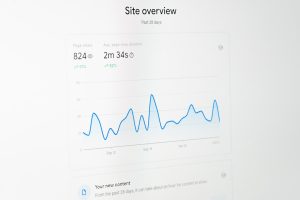
The XAVC file format, developed by Sony, is widely used in professional video recording due to its ability to store high-quality footage while maintaining efficient compression. This format is commonly found in 4K and HD video production environments, particularly among filmmakers, broadcasters, and video editing professionals. However, due to its advanced encoding (commonly using H.264 or H.265 codecs) and less universal compatibility, opening and editing XAVC files can be daunting for casual users or those unfamiliar with professional video tools.
This guide explores various popular video editing software options to help you open, work with, and export XAVC files efficiently, even if you’re a beginner. It also provides a breakdown of everything from required codecs to export best practices.
What Is an XAVC File?
XAVC is a recording format introduced by Sony in 2012. It supports resolutions ranging from HD (1080p) to 4K and 8K, making it a heavyweight contender in professional video production. XAVC uses the MXF (Material eXchange Format) container, which encapsulates video, audio, and metadata.
Key Characteristics of XAVC:
- High Resolution: Up to 8K video quality
- Efficient Compression: Using H.264 or H.265 codecs
- Advanced Metadata Support: Essential for broadcast and editing workflows
- Standardized Format: Ideal for professional environments

Using Popular Software to Open and Edit XAVC Files
1. Adobe Premiere Pro
Adobe Premiere Pro is widely regarded as one of the best professional editing suites out there, offering full support for importing and editing XAVC files right out of the box.
To open and edit in Premiere Pro:
- Launch Adobe Premiere Pro.
- Go to File > Import and select the .MXF or .MP4 file encoded in XAVC.
- Drag and drop the file into a new or existing sequence.
Adobe has regularly updated its formats and codecs support, including native support for XAVC Intra and XAVC Long GOP formats. GPU acceleration ensures proper playback and rendering performance.
2. Final Cut Pro (Mac Only)
Final Cut Pro is Apple’s flagship editing software and equally capable of handling XAVC formats. Like Premiere Pro, it natively supports Sony’s high-performance codec.
Steps:
- Insert your media card or connect your device and allow Final Cut Pro to detect the files.
- Use the Media Import window to preview and import the clips into your library.
- XAVC files will appear as part of your project timeline. From there, edits, transitions, and effects can be added seamlessly.
The software automatically optimizes rendering XAVC files, particularly with ProRes workflows for smooth post-production editing.
3. DaVinci Resolve
Developed by Blackmagic Design, DaVinci Resolve is another professional-grade editing software that is widely appreciated for its color grading capabilities. It also supports the XAVC format, including both Long GOP and Intra-frame versions.
To import XAVC files:
- Open DaVinci Resolve and create a new project.
- Go to the ‘Media’ tab and locate your XAVC file (usually with a .mxf or .mp4 extension).
- Drag the clip into your media pool and timeline to start editing.
DaVinci Resolve can also output files in professionally acceptable formats, making it ideal for finishing high-resolution projects.
4. VLC Media Player (For Viewing Only)
If you’re only looking to view an XAVC file and don’t need to edit it, VLC Media Player is a reliable and free solution. It supports most video codec standards including H.264 and H.265, which are commonly found in XAVC files.
Steps:
- Download and install VLC Media Player.
- Go to Media > Open File and select the XAVC video.
- Playback should begin automatically.
While VLC doesn’t allow editing, it’s perfect for quick previews or checking footage before migrating it into advanced editor software.
5. Sony Catalyst Browse
Catalyst Browse is Sony’s official media viewing software designed specifically for XAVC and other professional Sony camera formats. It’s a lightweight application that supports metadata, LUT application, and file transcoding.
Use it to:
- View and organize metadata-rich video clips
- Transcode XAVC into more editing-friendly formats
- Apply color adjustments and basic grading
6. VEGAS Pro
VEGAS Pro, another Sony-developed software that is now owned by MAGIX, provides specialized tools for importing and modifying XAVC files. With native support for Sony’s codec formats, it reads and edits footage without extra plug-ins.
Process:
- Open VEGAS Pro and drag your XAVC file into the timeline.
- Use the editing tools to cut, trim, apply effects, and render.
- Export to your desired format.

Tips for Editing XAVC Files Efficiently
- Use Proxy Files: Create low-resolution versions of your clips to improve editing speed.
- Keep Your Software Updated: Ensure you’re using the latest version to access codec updates.
- Check System Compatibility: XAVC files demand high-performing hardware, so sufficient RAM and GPU are crucial.
Most importantly, ensure you’re following professional delivery specifications if you’re exporting for broadcast, streaming, or cinema use. Always render your project in a format that matches your target platform’s requirements.
FAQ: Working with XAVC Files
- Can I convert XAVC files to other formats?
- Yes, you can convert XAVC to MOV, MP4, or ProRes using tools like HandBrake, Adobe Media Encoder, or Sony Catalyst Browse.
- Are XAVC files supported on Windows 10 or 11?
- Yes, but ensure your media player or editing software includes the required codecs. Windows Media Player by default does not support them.
- Is there any loss in quality when editing XAVC?
- No, not during the editing phase if you’re using professional software that natively supports the format. However, rendering or exporting to a different format may involve compression, depending on your settings.
- What’s the best resolution for editing XAVC video?
- If your hardware supports it, edit in full 4K or 8K. Otherwise, use proxy files or edit in 1080p and link back to original 4K files for final export.
- Why won’t my software open an XAVC file?
- Your software may not support the codec used in that specific XAVC file or lacks required plugins. Try updating the software or converting the file to a compatible format.
In summary, while XAVC files offer unmatched video quality and metadata control, they do introduce a layer of complexity for newcomers. Choosing the right video software ensures a smooth editing workflow and unlocks the full potential of this powerful format.






